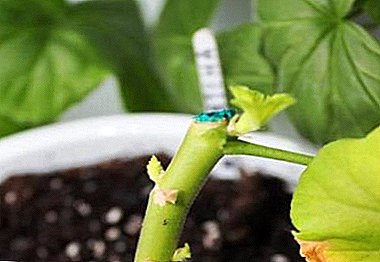
Remember the expression "by leaps and bounds"? This is roughly the case with the development of nanoparticle based technologies.
Sometimes it seems that scientists change the foundations of the universe, forcing the basic physical laws to give way to human genius. Interesting developments appear at the junction of biology and physics.
 The Institute of Plant Physiology of the Russian Academy of Sciences presented a promising development of biofuel production based on nanobiomolecular complexes operating on solar energy.
The Institute of Plant Physiology of the Russian Academy of Sciences presented a promising development of biofuel production based on nanobiomolecular complexes operating on solar energy.
Fully research results are available on journals.elsevier.com.
Constant deterioration of the ecological situation along with the rapid development of the economy require the creation of cheap and safe energy. The Russian Science Foundation provides grants for such developments.
According to scientists, the most effective way to get cheap energy is to create objects capable of conducting photobiosynthesis, mimic photosynthesis, and use sunlight to separate water into oxygen and atomic hydrogen. It is assumed that artificial oxygen evolution complexes will be much more resistant to stress factors in comparison with their natural prototypes.
This will increase the yield of hydrogen with the same volume of water and light consumed. This effect becomes possible with the expansion of the spectrum of solar radiation used. Nano-molecular modifications of chlorophyll will achieve the desired results.
According to the author of the article, Suleiman Allahverdiyev, who is the author of the project, the group developed tested catalysts in a series of experiments, which consist of metal-organic compound. Nanostructured complexes were introduced into artificially created polypeptides and functioned as part of samples of vegetation and bacteria.
All samples are able to accelerate the decomposition of water. In fact, scientists have created a prototype of a living reactor to produce biofuels.
 Processes that produce hydrogen are used for a long time. The initiators are a common source, such as coal or electricity. Researchers improved photoelectrochemical systems using nanotechnology. The prototype was based on titanium oxide nanocomplexes, which were doped with nitrogen.
Processes that produce hydrogen are used for a long time. The initiators are a common source, such as coal or electricity. Researchers improved photoelectrochemical systems using nanotechnology. The prototype was based on titanium oxide nanocomplexes, which were doped with nitrogen.
The resulting structure can be considered an analogue of plant components and works by the energy of the Sun. The significance of the development lies in the inexhaustibility of the energy resource and the ability to create sources in unpopulated areas of the planet.
During the experiments, not just a working sample was created, but a structure capable of stably operating for 14-15 days. Studies have shown the possibility of modifying chlorophyll with obtaining unique properties - the nanocomplex is able to absorb low-energy photons.
Scientists plan to continue to work in the direction of expanding the spectrum of absorbed radiation: far red, near infrared region.
The studies were conducted jointly with the Tabriz and Azerbaijan universities, the Australian University of Technology, the University of Marburg. The application of joint efforts has shown a real opportunity to create working samples in the short term.
Perhaps soon, the endless sands of the Sahara or Gobi will be covered with modified nanostructures, giving cheap biofuels.












